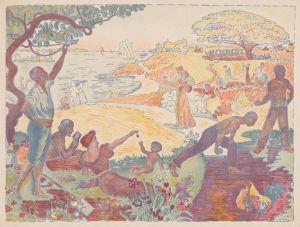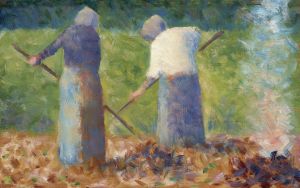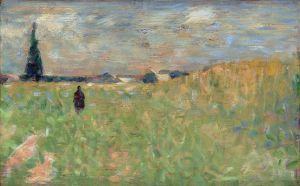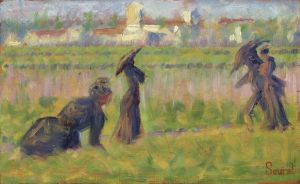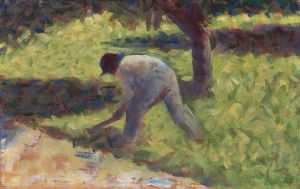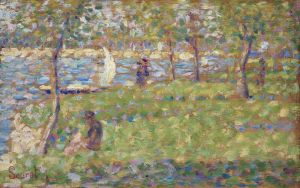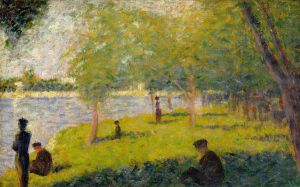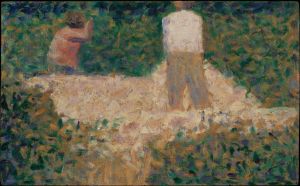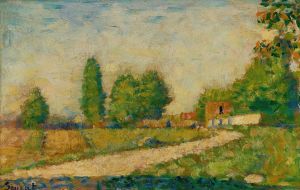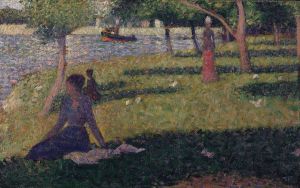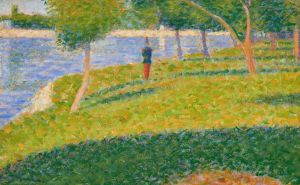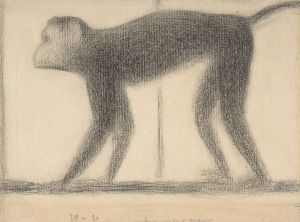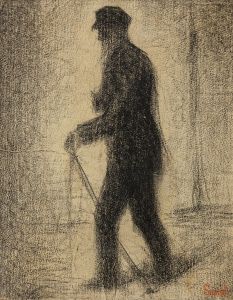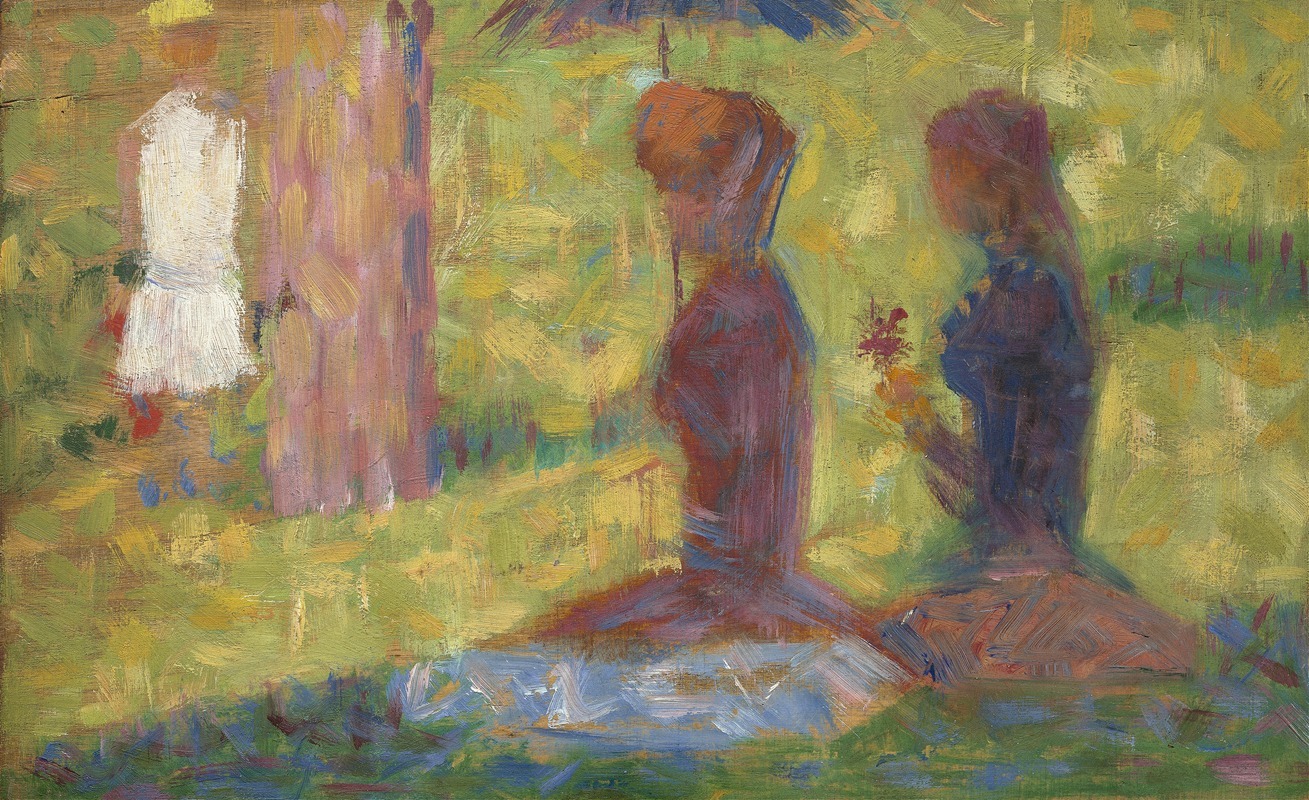
Study of Figures for La Grande Jatte
A hand-painted replica of Georges Seurat’s masterpiece Study of Figures for La Grande Jatte, meticulously crafted by professional artists to capture the true essence of the original. Each piece is created with museum-quality canvas and rare mineral pigments, carefully painted by experienced artists with delicate brushstrokes and rich, layered colors to perfectly recreate the texture of the original artwork. Unlike machine-printed reproductions, this hand-painted version brings the painting to life, infused with the artist’s emotions and skill in every stroke. Whether for personal collection or home decoration, it instantly elevates the artistic atmosphere of any space.
Georges Seurat, a pioneering French post-Impressionist artist, is renowned for his innovative use of pointillism, a technique characterized by the application of small, distinct dots of color to form an image. One of his most celebrated works is "A Sunday Afternoon on the Island of La Grande Jatte," completed in 1886. In preparation for this monumental painting, Seurat created numerous studies and sketches, one of which is known as "Study of Figures for La Grande Jatte."
"Study of Figures for La Grande Jatte" is a preparatory work that showcases Seurat's meticulous approach to composition and his dedication to capturing the nuances of light and form. This study is part of a series of sketches and oil studies that Seurat produced as he developed the final composition of "La Grande Jatte." These preparatory works were crucial in helping Seurat refine the poses, proportions, and interactions of the figures that would populate the final painting.
The study focuses on the figures that would eventually inhabit the idyllic scene of "La Grande Jatte," a popular leisure spot on the Seine River near Paris. Seurat's attention to detail is evident in the careful rendering of each figure's posture and attire, reflecting the diverse social classes and activities of Parisians during the late 19th century. The figures in the study are depicted in various poses, some standing, others sitting or reclining, capturing the leisurely atmosphere of a Sunday afternoon.
Seurat's use of pointillism in the final painting is foreshadowed in the study through his exploration of light and shadow. Although the study itself may not fully employ the pointillist technique, it demonstrates Seurat's interest in the effects of light on color and form. This interest is further developed in the final painting, where Seurat's innovative technique creates a vibrant, shimmering effect that captures the transient quality of light.
The study also reveals Seurat's interest in the scientific theories of color and perception that influenced his work. He was particularly inspired by the writings of Michel Eugène Chevreul, Charles Blanc, and Ogden Rood, who explored the optical effects of color and the ways in which colors interact with one another. These theories informed Seurat's approach to color in both the study and the final painting, as he sought to create harmonious compositions through the careful placement of complementary colors.
"Study of Figures for La Grande Jatte" is an important piece in understanding Seurat's artistic process and the development of "A Sunday Afternoon on the Island of La Grande Jatte." It provides insight into the artist's methodical approach to composition and his commitment to capturing the essence of modern life through innovative techniques. The study, along with other preparatory works, highlights Seurat's role as a leading figure in the post-Impressionist movement and his lasting impact on the art world.
Today, "Study of Figures for La Grande Jatte" is appreciated not only for its connection to Seurat's masterpiece but also as a testament to the artist's skill and vision. It serves as a valuable resource for art historians and enthusiasts seeking to understand the evolution of Seurat's work and the broader context of 19th-century art.





